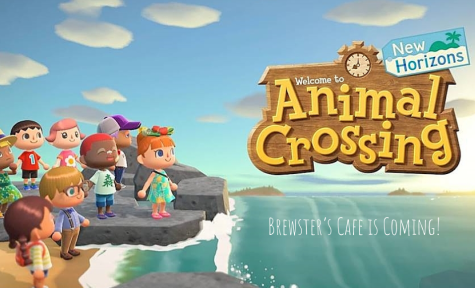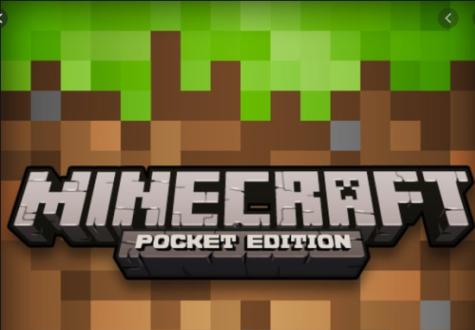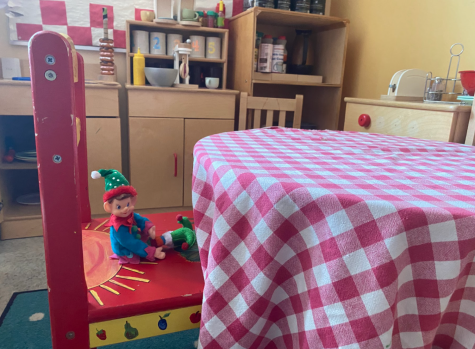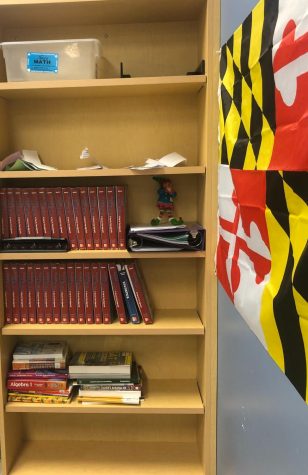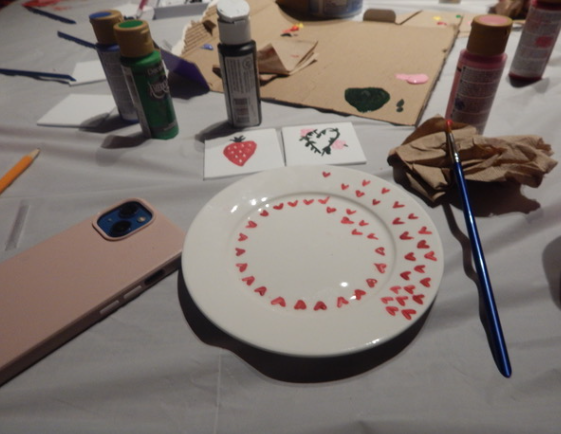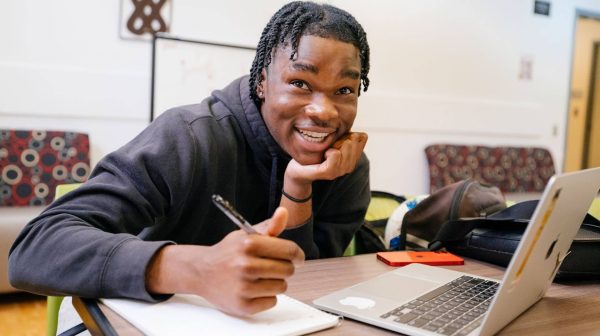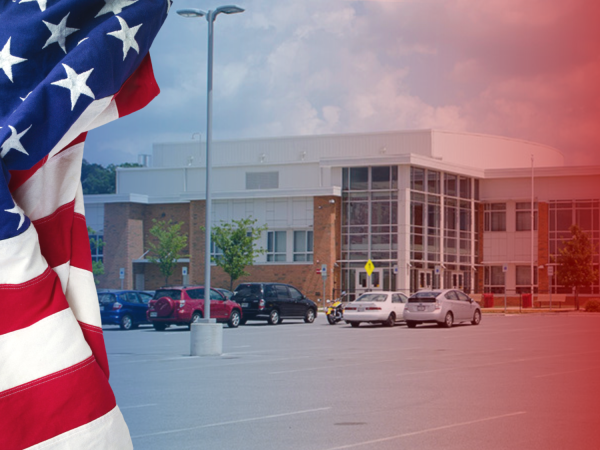Native American Heritage Month: What lies beneath our school identity and spirit?
Audrey Kilgore, a future Lancer, exploring the original Linganore High school structure and its signature spirit symbols before it was demolished and rebuilt.
Picture the packed stands of the Linganore stadium filled with spirited students wearing spear-emblazoned shirts, participating in celebratory “tribal” calls, and spreading a “one tribe” spirit.
Now think beyond this surface-level take on the Linganore Lancers. Where did these names and symbols come from? What do they actually mean? Most importantly, by using them, is Native American heritage being honored or harmed?
Several years ago, controversy emerged over how some believe the mascot and an old headdress-wearing tradition were offensive symbols that should no longer be used. The headdress and mascot are no longer being used because they mock Native American people by continuing negative stereotypes that do not reflect their depth of culture, sophisticated traditions and way of life.
While students are aware of the assumed tie of “Lancers” to a Native American tribe, the substantial connection to a Chief Linganore or a Maryland tribe has never been fully authenticated. More important, though, is that Native American heritage does not get much more attention except in the symbol of the headdress and feathers.
Delaney Ridgell, a high school senior, admits the knowledge gap among students on the connection between their school pride and Native American values.
“Most people do not understand the true meaning behind the Lancer, and therefore cannot fully adapt to the meaning and spirit that it holds,” says Ridgell. “We have a lot of school pride, but I do not think it is tied to Native American culture and our mascot.”
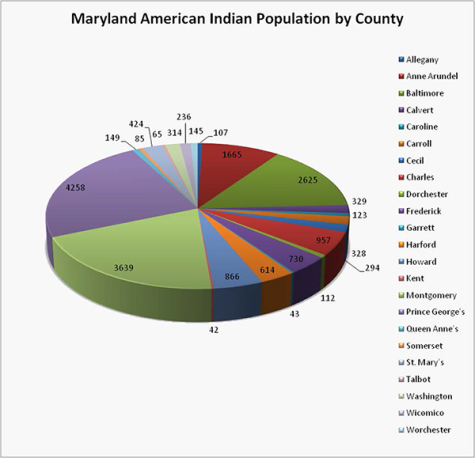
November, or Native American Heritage Month, is a time to reflect upon and respect the culture, traditions and sacrifices indigenous people in our country have been forced to make throughout history with impacts lasting to present day.
In honor of Native American Heritage Month, the real indigenous experience and what it means to be Native American should be considered when thinking about the school’s identity today. Only then will we be able to avoid and eliminate offensive and controversial issues.
About Indigenous People
When white settlers arrived in 1630, most Native Americans in Maryland belonged to Algonquian and Susquehannock (Iroquois) tribes. Intertribal tensions, as well as tensions with the settlers, led most of the tribes to leave Maryland completely by 1730. Other tribes, including the Tuscarora tribe, came through the Monocacy Valley region, but only stayed briefly on their journeys north and west from other regions and were mostly gone from Maryland by the end of the eighteenth century.
With this history in mind, the transition of Columbus Day to Indigenous Peoples Day over the last few decades provides an opportunity to more accurately reflect what should be celebrated when it comes to our nation’s history with Native Americans. The arrival of Columbus was the beginning of centuries of conflict for our country’s first residents. Changing the purpose of the day refocuses attention on a more accurate portrayal of the past and the value of indigenous people.
Current Conditions
Today, many Native Americans live on reservations in remote areas that were provided to bring tribes under government control and reduce conflicts with settlers. There, they struggle with poverty, lack of access to jobs and resources, and health problems.

Cheryl Lynn Hermann reflects on her personal experiences working on fundraising projects over the years for Native Americans. She is a 14-year employee at the nonprofit organization Partnership with Native Americans, PWNA, which is working to build strong, self-sufficient Native American communities by meeting short-term needs and providing long-term solutions.
“I am not Native American, but my opinion is that Native Americans who are from the reservations consider them to be home and have very close communities on the reservations,” Hermann says. “Reservation lands encompass their family generations, history, heritage and culture. They have deep family roots on the reservations and support each other in good times and in difficult times. The reservations are a sacred place where their ancestors lived, had families, ceremonies, fought battles, died, and their spirits still remain.”
Many Native Americans today live on remote reservations in the Northern Plains or Southwest regions of the country. Life is hard on the reservations for a number of reasons, given the struggles of the past and their difficult living circumstances today. Native Americans have been able to remain strong due to their resilience from their family and community values.
Hermann explains, “Native Americans are aware that the reservation land (they were forced to go to) where they live is not ideal — they experience a geographically isolated and unfavorable environment for growing food and extreme weather conditions… There is a lot of poverty and hunger on the reservations…Depression among Native Americans is a crisis, especially for teens living on the reservations.”

Hermann also describes how the remote areas where reservations are located are far from many of society’s support systems: hospitals, emergency response, healthy and affordable food options, stores, and jobs. This contributes to high unemployment rates and health issues related to poor nutrition, making conditions challenging.
Native Americans are living in these conditions because they were forced to leave their native lands in the first place. The struggles that have followed are something that should be recognized beyond Native American Heritage month, especially when the school identity is built on that history.
Increasing Inclusion
One way to determine whether the Linganore identity is insensitive or inclusive is to consider the people whos culture it reflects.
Andrea Poffinberger, long-time staff member, shares her opinions from a different perspective.
“I don’t really think the student body gives much thought to Lancer identity. I think they follow traditions year to year and enjoy the feeling of belonging, fitting in with a group of fellow young people,” says Poffinberger. “Lancer identity to me simply means I value being a part of a community that gets behind student-athletes and coaches and has so much pride for being members of ‘The Tribe.'”
Linganore students and administrators need to make sure that the impression of Native Americans through school identity is respectful and inclusive of their actual experiences. Tribes are not a “thing of the past.”
One way to improve Native American representation is to promote information that will encourage a better understanding of indigenous history and culture on an ongoing basis. Many organizations are publishing land acknowledgement statements on their websites. This would honor the original residents of the land Linganore is built upon and the background of them losing the land.
In regular student and parent communications like the Find Out First newsletter and morning announcements, the school could share Native American Heritage facts to help people connect with history on a deeper level to keep it fresh in their minds.
During Native American History Month, the Student Government Association could hold a fundraiser for organizations like PWNA to help Native Americans today.
Creating an inclusive, enjoyable school experience for all students while honoring the past can start right now. Through efforts to raise awareness and support, students and school staff can truly honor the people who give meaning to Linganore’s school identity.
These efforts can go a long way if we focus on incorporating Native American culture in our classes and history lessons, and fostering pride in Native American history without the degrading symbols. Native American heritage is part of our history, and we should know who we are as a country.
Your donation will support the student journalists of Linganore High School. Your contribution will allow us to purchase camera/recording equipment and software. We hope to raise enough money to re-start a monthly printed issue of our paper.



